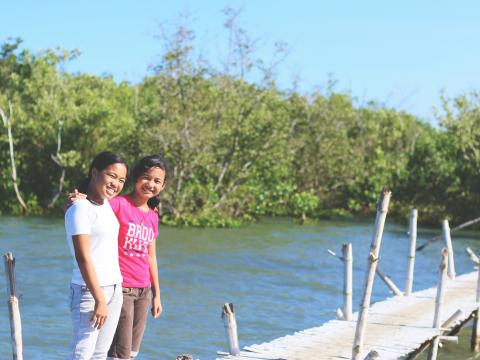Child leaders fight affects of climate change through mangrove planting

In the Philippines, climate change is having a devastating impact on the tropical country. Communities and lives have been destroyed because of the occurrence of abnormally strong typhoons. Typhoon Haiyan, which hit central Philippines in 2013, killed more than 6,000 Filipinos. Aside from the increase of storm occurrence, heat waves have also peaked to staggering measures.
Little activists for the environment
Taking small but significant steps, a group of child leaders in a small town in the northeastern part of the province decided to become proactive against this searing issue.
Empowered by community organizations, these little environment activists developed an initiative to plant mangrove seedlings along a coastal area in their community. The planting activity is part of World Vision’s disaster risk reduction (DRR) programme, in partnership with other community leaders.
“We are thankful that World Vision and our local government provided us the venue to help save the environment,” shares Maria who was part of the mangrove planting activity.
The two child leaders have witnessed first hand the effect of climate change in their backyard. Rice fields have gone dry due to shortage of rain for the past months.
“This mangrove activity is very important to the environment since it will prevent global warming,” highlights Analiza, Maria’s friend and co-planter. “The trees will help in making the air clean.”
Aside from alleviating the effect climate change in their community, the planted mangrove seedlings will soon rehabilitate the ecosystem of marine life that was damaged by strong typhoons and irresponsible fishing. The increase of marine life means an improved fishing livelihood for families.
“We hope that the mangrove seedlings that we planted will grow largely and protect the environment,” say both environmental advocates. “We also hope that more children like us will take initiatives in protecting Mother Earth.”

